Expert’s Rating
Pros
- Gorgeous design
- Superlative cameras
- Excellent screen
Cons
- No native Google support
- Awkward AppGallery
- No 5G
Our Verdict
Beautiful design and very good cameras make the Huawei Mate 50 Pro one of the most frustrating smartphones of 2022 thanks to a lack of 5G and official Google app and services support.
Reviewing a Huawei phone these days (let alone using one full time) is an exercise in acute frustration.
The phone maker was, in early 2019, riding the crest of a beautiful Android wave. The P30 Pro was one of the best phones ever made and Huawei was really challenging Samsung’s market dominance.
Nearly four years on and one US trade ban later, Huawei’s smartphones are hobbled by a lack of native Google app and service support, and an inability to source 5G modems.
That does not make phones like the Mate 50 Pro unusable – far from it – but it does make them challenging to use like you would any other Android phone.
Design & build
- Lovely sleek design
- Matt glass back
- Curved edges
Huawei still knows how to make stunning hardware. The Mate 50 Pro is one of the best looking and feeling phones I’ve tested in 2022, with a frosted silver glass back and just the right amount of curve to the edges of the display to make it feel slim in the hand.
There’s also a black version available in Europe, though the best looking version, with orange vegan leather with gold highlights, is not available in the UK.
Curiously, that orange version has Huawei’s more durable Kunlun glass on the display and is water resistant up to six metres – the silver and black versions get an unspecified, less hardy glass and only two metres of water resistance.
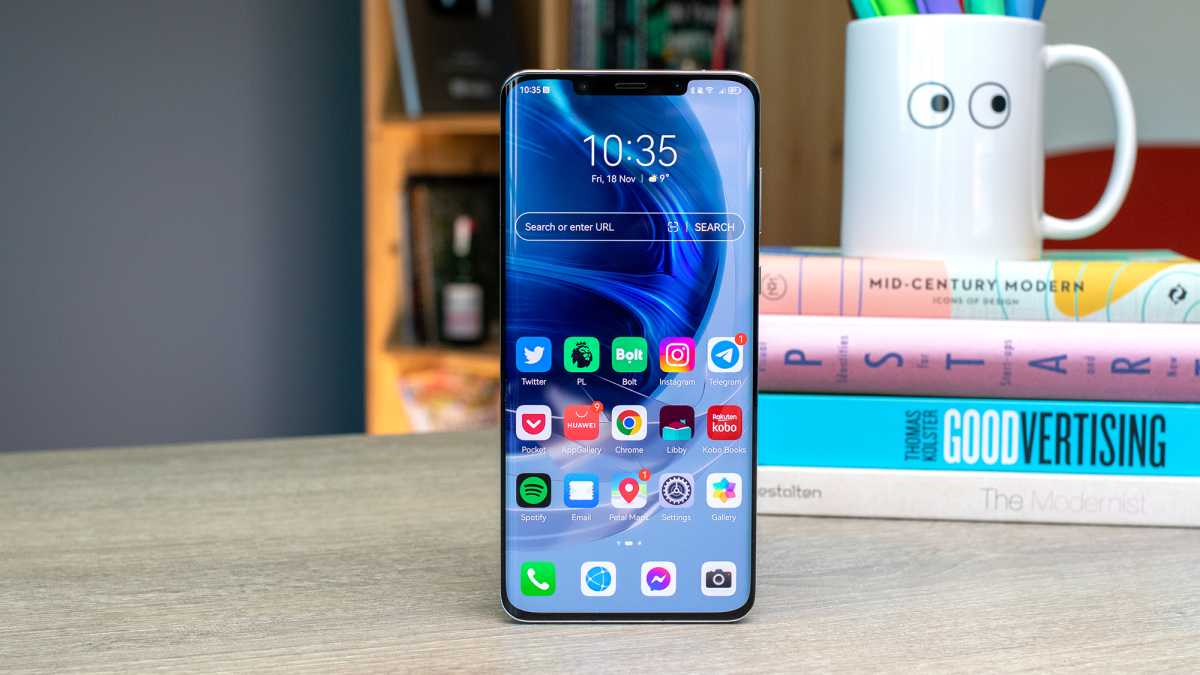
Henry Burrell / Foundry
Most eye-catching about the phone is its large circular camera module on the back, which houses three lenses (though it’s made to look like four thanks to a laser auto focus unit). Its central positioning means the phone doesn’t rock when on a tabletop but my word, this is a slippery phone. There’s a low quality TPU case in the box that I normally wouldn’t use, but had to because without it the phone slid off chairs, tables, and desks.
This is a large phone that I found impossible to use with one hand, needing two to grip it to reach the top of the display. Up there is a long thin notch now rarely seen on new Android phones. It houses the selfie camera and time-of-flight (TOF) sensor for biometric face unlocking of the phone.
Screen & speakers
- 6.74in curved OLED
- 120Hz refresh rate
- Solid stereo speakers
The phone is large because of the big 6.74in OLED screen, which has excellent colours and a high, sharp resolution of 1212 x 2616p. It’s a superb panel with a 120Hz refresh rate, though it does not have the LTPO tech that allows other phones like the iPhone 14 Pro to scale down the rate to 1Hz as appropriate to conserve power – Huawei’s auto settings only allow the phone to go between 60Hz and 90Hz.
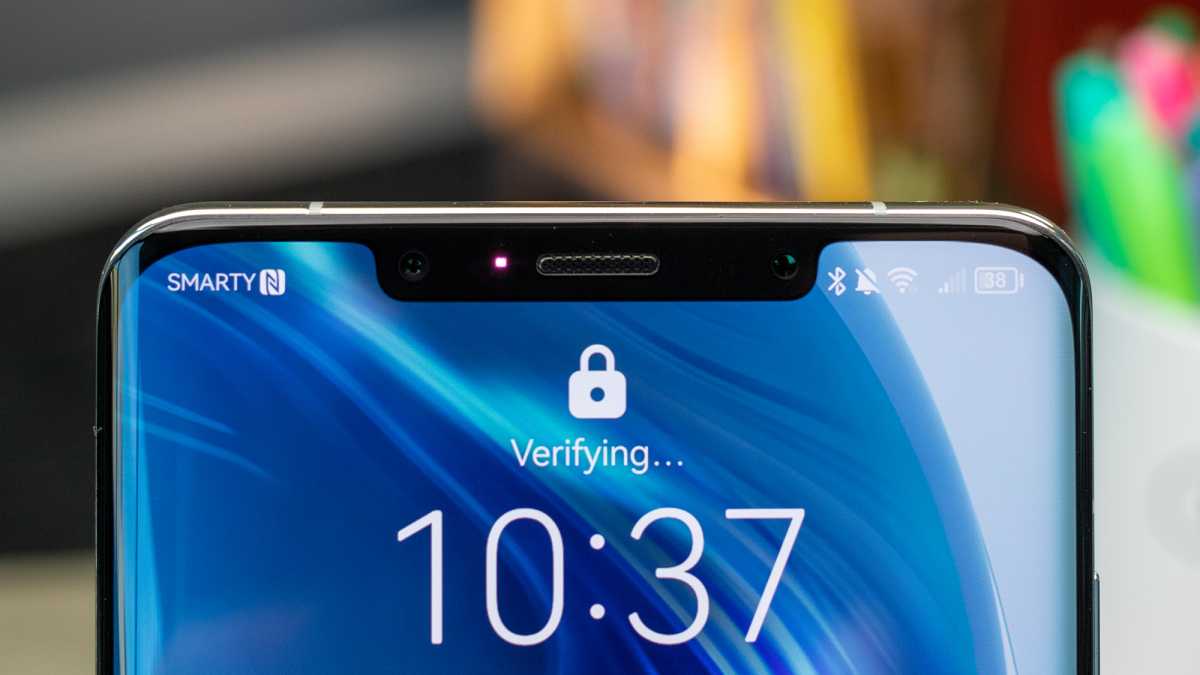
Henry Burrell / Foundry
Videos and photos look very good when viewed full screen, with that high resolution really paying off if the content is compatible. YouTube videos in 2160p can scale at full resolution here unlike other premium phones with lower res displays.
Peak brightness is very high, and though the panel is curved at the edges, colours do not distort.
The stereo speakers that use the earpiece grille and down firing speaker on the bottom edge are nicely full sounding for playing videos, the radio, or podcasts.
Specs & performance
- Snapdragon 8+ Gen 1 chipset
- 4G only – no 5G
- 66W wired charging
Huawei used to use its own Kirin chipsets but the Mate 50 Pro instead uses a Qualcomm Snapdragon 8+ Gen 1, a very capable chip that at the time of launch in late 2022 has only just been superseded by the 8 Gen 2.
Due to Huawei’s trade limitations, it’s only capable of 4G networking, so you can’t access 5G. It’s not the end of the world, but when you’re spending over a grand on a phone it’d be nice for it to be futureproofed for when 5G really comes into its own.
Despite that, performance is excellent for my use cases, which is to be honest not pushing the phone to its extremes. To test that, I fired up some high end mobile games such as PUBG Mobile and they ran without a hitch.
That’s good considering all models of the phone come with 8GB RAM, a figure that’s actually a little low compared to other high-end Android phones. The cheaper £629 OnePlus 10T has 16GB, and the same chip but with 5G.
Most models, my unit included, have 256GB storage which is expandable, but only using Huawei’s own nano memory cards.
You also get an impressive array of location technology built in with dual-band GPS, AGPS, GLONASS, BeiDou, GALILEO, QZSS and NavIC, though the European models don’t get support for sending messages via satellite like the Chinese version does.
Camera & video
- 10-step variable aperture
- Stunning main sensor
- Versatile ultrawide and telephoto
The main feature of the Mate 50 Pro is its variable aperture main camera sensor. It’s the first phone ever to have a lens whose aperture can be manually changed between more than two stops.
You can select ten steps between f/1.4 and f/4.0in the camera app’s pro mode, or let the system pick for you in auto.
Choosing closer to f/1.4 lets in more light, giving shots a natural bokeh effect where the close subject is in focus and the background is blurred, whereas closer to f/4.0 lets in less light but the background comes more into focus.
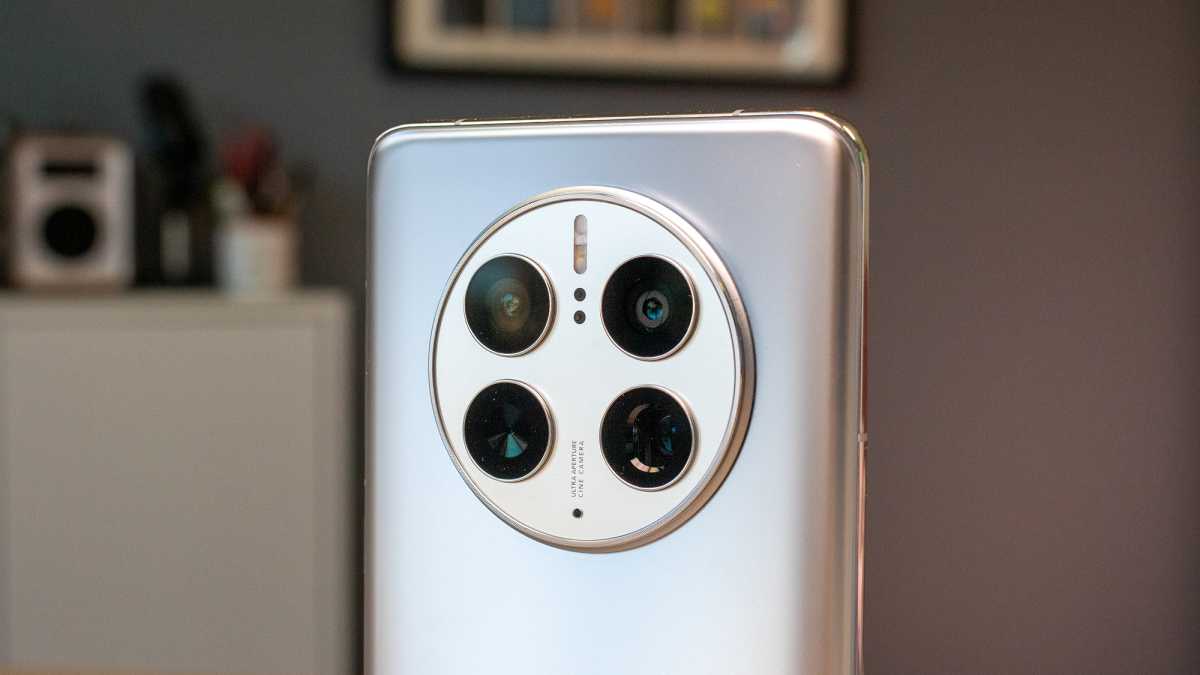
Henry Burrell / Foundry
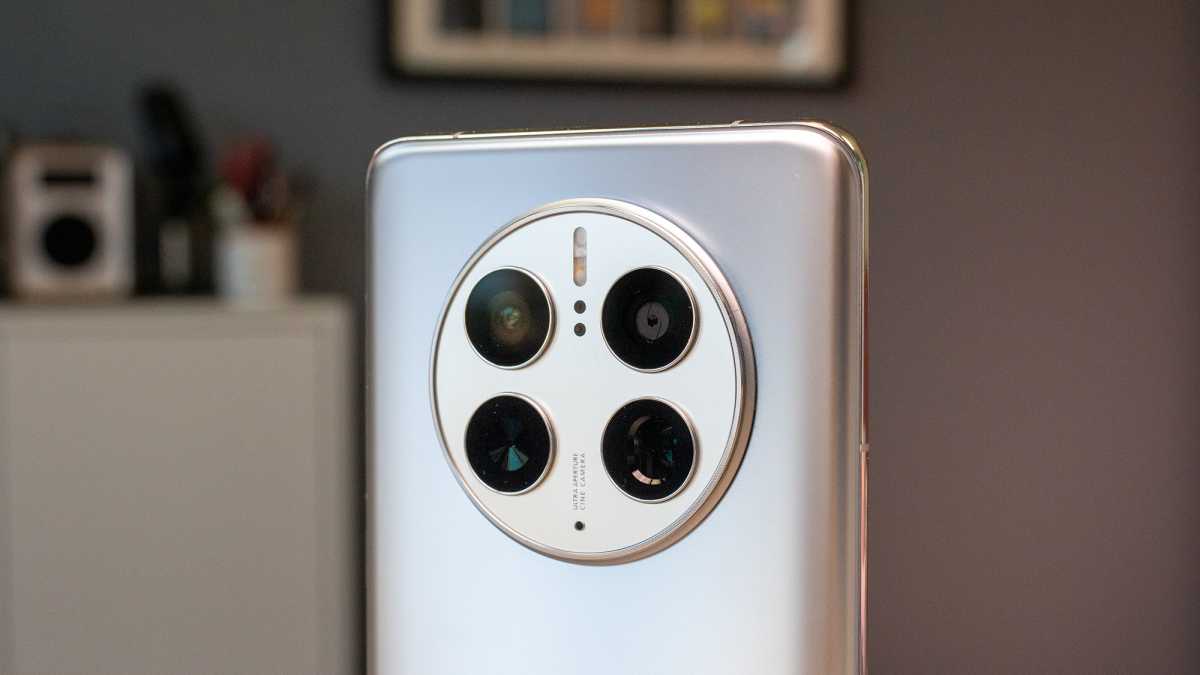
Henry Burrell / Foundry
It’s a neat trick, and quite astonishing that Huawei has fit a 10-step moving part into the back of a smartphone. But in actual use, I didn’t find it that ground-breaking. It’s fun to use, particularly on objects up close to see the effect of changing the aperture – but actual photographs don’t reflect the clever technology because they just end up normal shots.
Thankfully, the main 50Mp sensor is outstanding, and the Mate 50 Pro genuinely produces some of the best photos of any smartphone camera ever. It uses Huawei’s preferred RYYB (red yellow yellow blue) sensor set up where the usual green pixel is replaced by a second yellow pixel, which in turn lets in more red and green light. This lets more light into the sensor and improves low light photography.
Shots in daylight are stunning with superb detail and tasteful dynamic range for pleasingly real to life photos. In low light the dynamic range is also phenomenal, with good detail and light management where other phone cameras might blow out the white of the sky or a light source in the dark. I often did not need the night mode in the camera app to get amazing night-time shots.
There’s also an ultrawide f/2.2 sensor that can take close-up macro shots, and a 64Mp, f/3.5 periscope zoom lens with optical image stabilisation that has a 3.5x optical zoom.
It makes for a versatile camera, and one that more often than not I was happy with. It’s as good as the Vivo X80 Pro and Google Pixel 7 Pro in many instances. Shooting in 4K up to 60fps also looks incredibly crisp.
On the front of the phone is a 13Mp ultrawide angle f/2.4 selfie camera that is perfectly good for selfies and video calls, which sits alongside a TOF sensor that allows for 3D secure face unlock – making the Mate 50 Pro one of the few Android phones to have a face unlock feature that’s similarly secure to Apple’s Face ID on the iPhone.
Battery & charging
- 4700mAh battery
- 66W fast charging
- Easily one day on a charge
The Mate 50 Pro’s 4700mAh battery is sizable but not the biggest on a device with specs this high, that demands a lot of power for processing the screen. Despite that it easily lasted a full day of use on 4G, using maps, taking photos, and messaging as I normally would.
In the box is a 66W power brick and cable that charges the phone via USB in about 40 minutes from empty. This is pretty fast, and better than you’ll find on the Samsung Galaxy S22 Ultra or Google Pixel 7 Pro.
It’s also got 50W wireless charging, but I couldn’t test that as the compatible charging pad is sold separately.
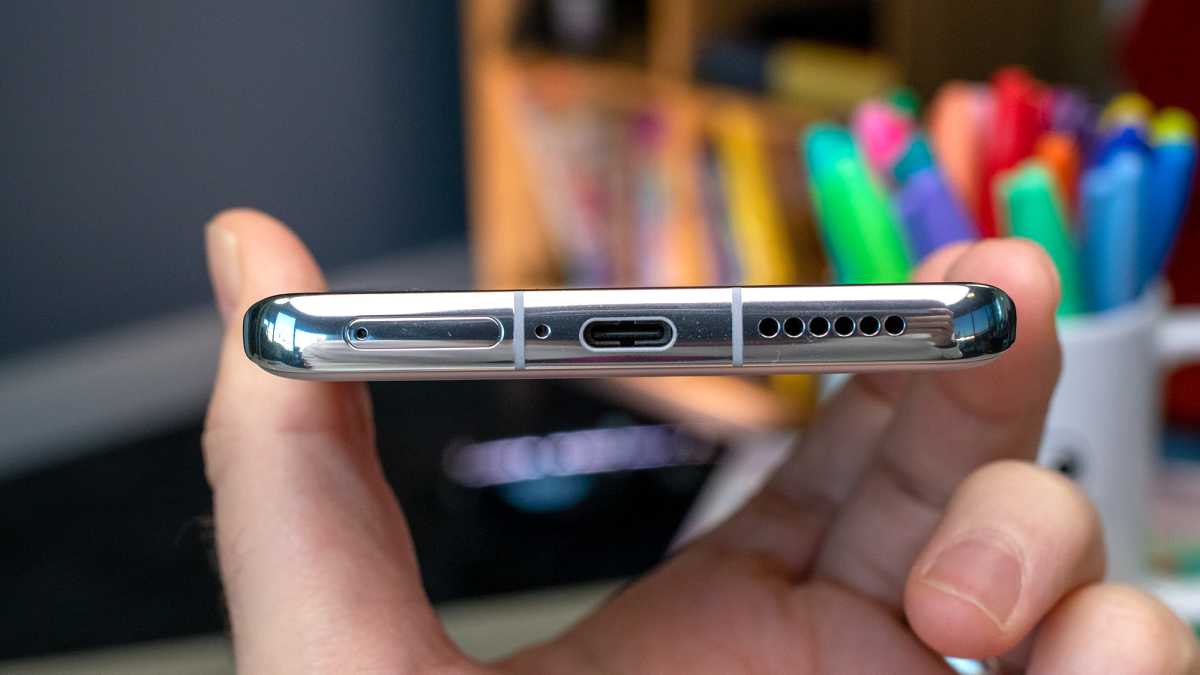
Henry Burrell / Foundry
Software & updates
- No native Google support
- Poor app selection in AppGallery
- No automatic updates for sideloaded apps
The Achilles’ Heel of any Huawei phone, this one included, is software. I’ll try and put it as simply and fairly as possible.
The phone runs on EMUI 13, which is based on open source Android. There’s no indication how long Huawei plans to keep the phone updated for.
The Mate 50 Pro cannot natively run Google apps or services properly. This is because it cannot use Google’s version of Android with software that supports the services properly.
The phone does not come with the Google Play Store installed, so instead you have to download apps from Huawei’s AppGallery app store. The issue is AppGallery does not have most of the apps you want – and as an aside, this is a pretty spammy place with lots of full screen ads, not something I expect from a device this expensive.
If the only apps you use are TikTok, Telegram, Snapchat, Tinder, Microsoft Outlook, WeChat, and Deezer then you’ll be fine.
But WhatsApp, Facebook, Instagram, Netflix, Disney+, Twitter, PayPal, and many other popular apps are not available – but you can download them.
Huawei allows you to search for these apps either in AppGallery or its separate Petal Search app, which gives you a confusing listing page for possible APK files to download in order to install the apps from a different source.
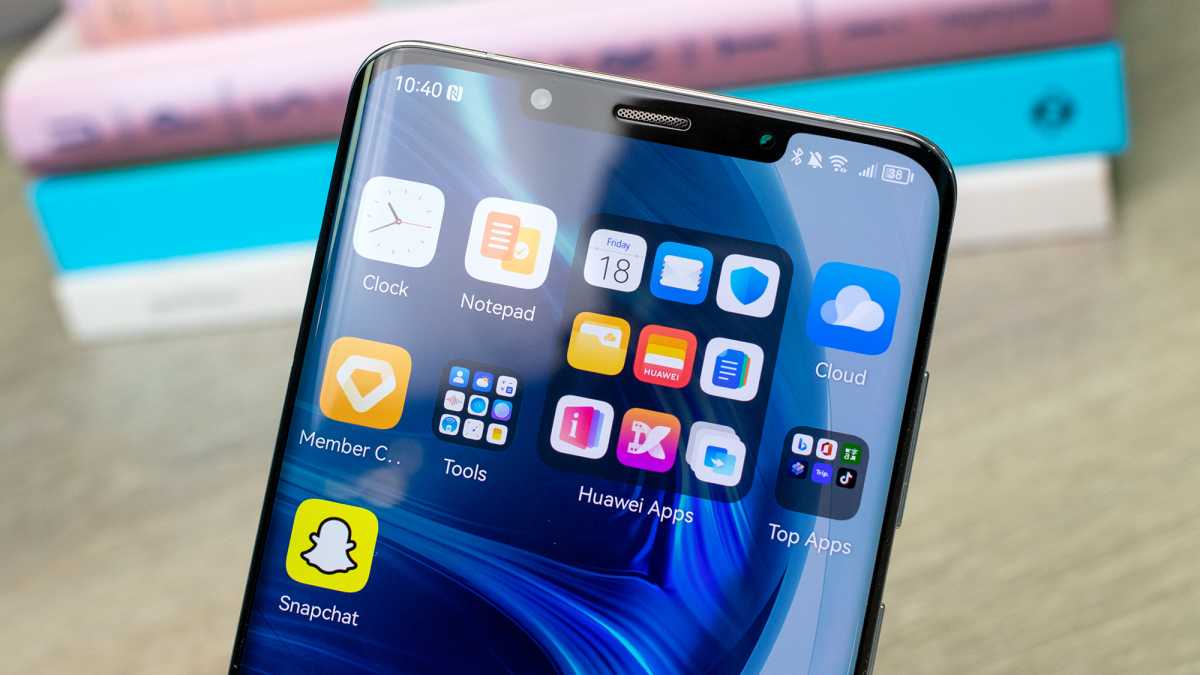
Henry Burrell / Foundry
This is legal and something Android allows for. It’s called sideloading. The problem is, sideloading is not very user-friendly.
There’s also a question of security here. Huawei says it keeps tabs on the APKs its system shows you, and it also says it performs security scans on files before they are downloaded. But without the comfort that these files have been passed as safe by an app store infrastructure, you’ll still have to be careful you’re not installing something dodgy.
Let me be clear: downloading the apps you want on this phone is possible, but confusing and not a good user experience. I got Twitter, Instagram, Libby, Facebook Messenger, and Netflix working fine using APK downloads. I could sign in, they worked, and I got notifications as normal.
Updates to apps are also handled automatically, though sometimes take a little longer – as there’s a delay between the app developer pushing an update to Google Play Store and that updated APK making it online. You’ll need to make sure you’ve enabled notification permissions to Petal Search for those updates to come through though.
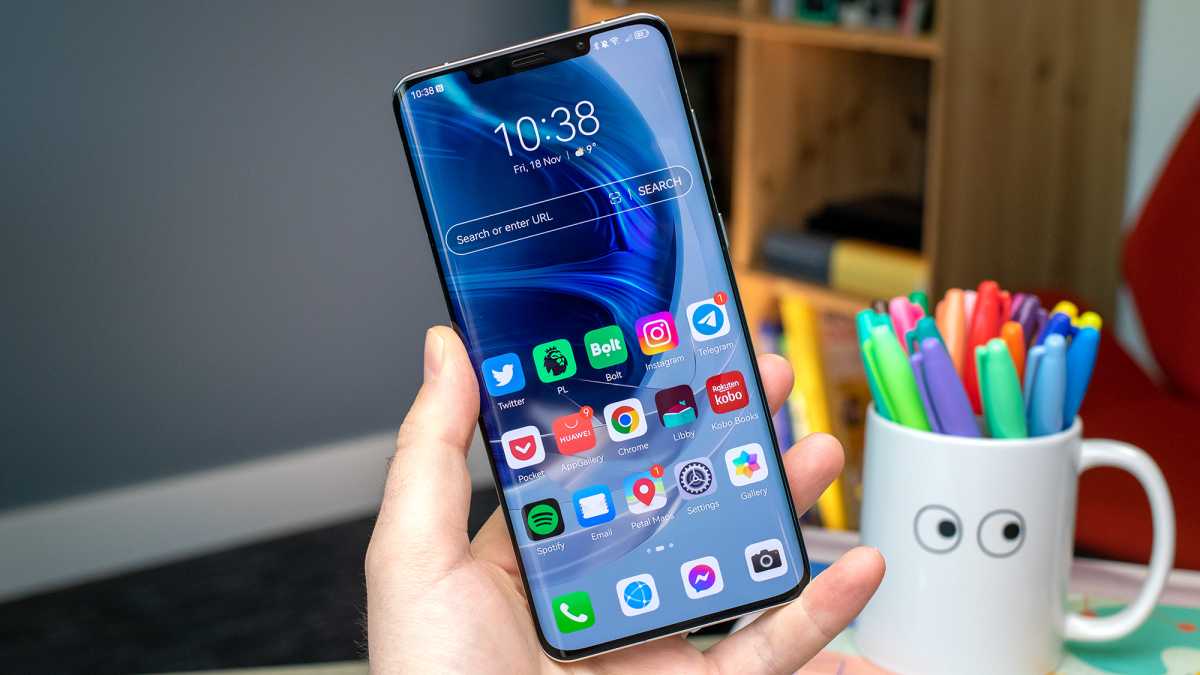
Henry Burrell / Foundry
While many apps will work fine, there are exceptions. Google apps can be installed but can’t access Google servers, so are severely hampered. You also can’t run apps like Uber or Citymapper because they require Google Maps access, and you can’t download your WhatsApp history from an old Android phone because it’s backed up in Google Drive.
You can get Google services running using a sandbox application like GBox, but don’t bother. It’s far too complicated and unreliable. Just buy another phone.
Apps aside, the phone’s software is quite attractive and uses its own system font rather than the one most phones use from Google called Roboto. You can create attractive widgets and put apps into large home screen folders so you can open apps without opening the folder. Petal Maps is also surprisingly good and if you want to use Huawei’s native apps for messaging, contacts, weather, and cloud storage they all work as you’d expect.
I do enjoy how you can link the phone with a Huawei laptop or tablet for easy file sharing and screen mirroring, though that requires you to go all in on Huawei devices in your life.
Funnily, the Mate 50 Pro is probably the best phone on the market if you want to get off grid from Google. For everyone else, it’s annoyingly restrictive and does not act how Android is designed to.
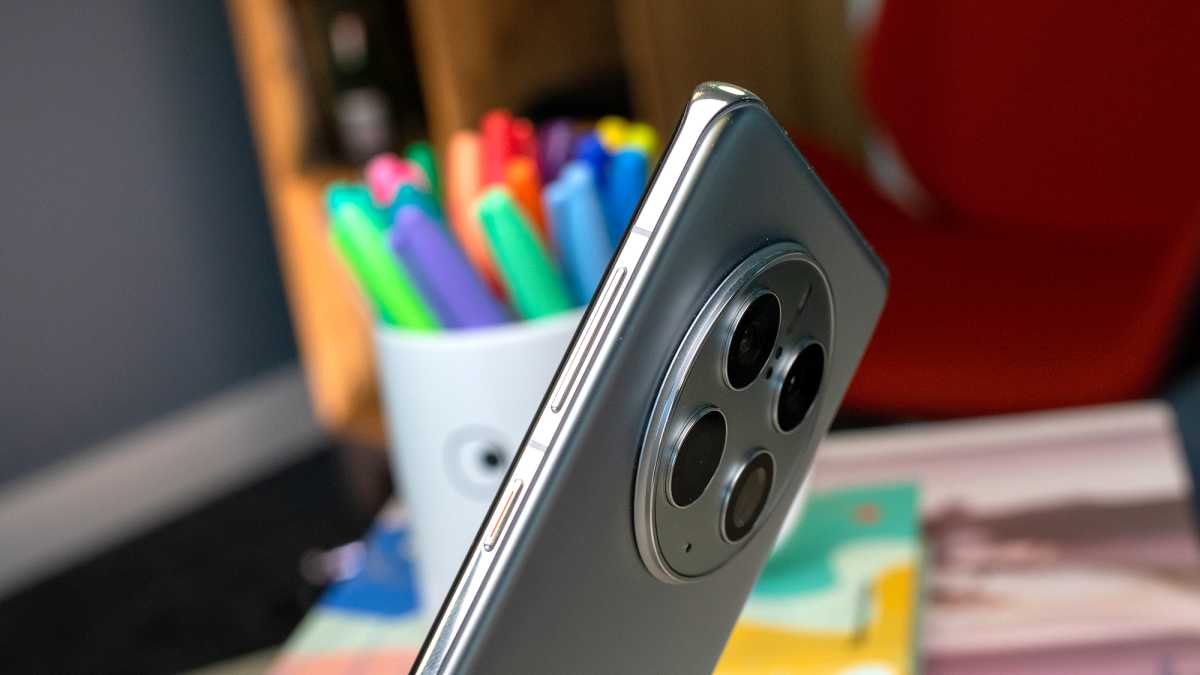
Henry Burrell / Foundry
Price & availability
The Huawei Mate 50 Pro costs £1,199 in the UK in silver or black. You can buy it directly from Huawei.
In Europe it costs €1,299, or €1,399 for the special orange edition. It’s not on sale in the US.
The price makes the phone an even harder sell. It’s such a high price to pay for a software experience that frustrates, and even a superb screen and very good camera can’t make up for…
